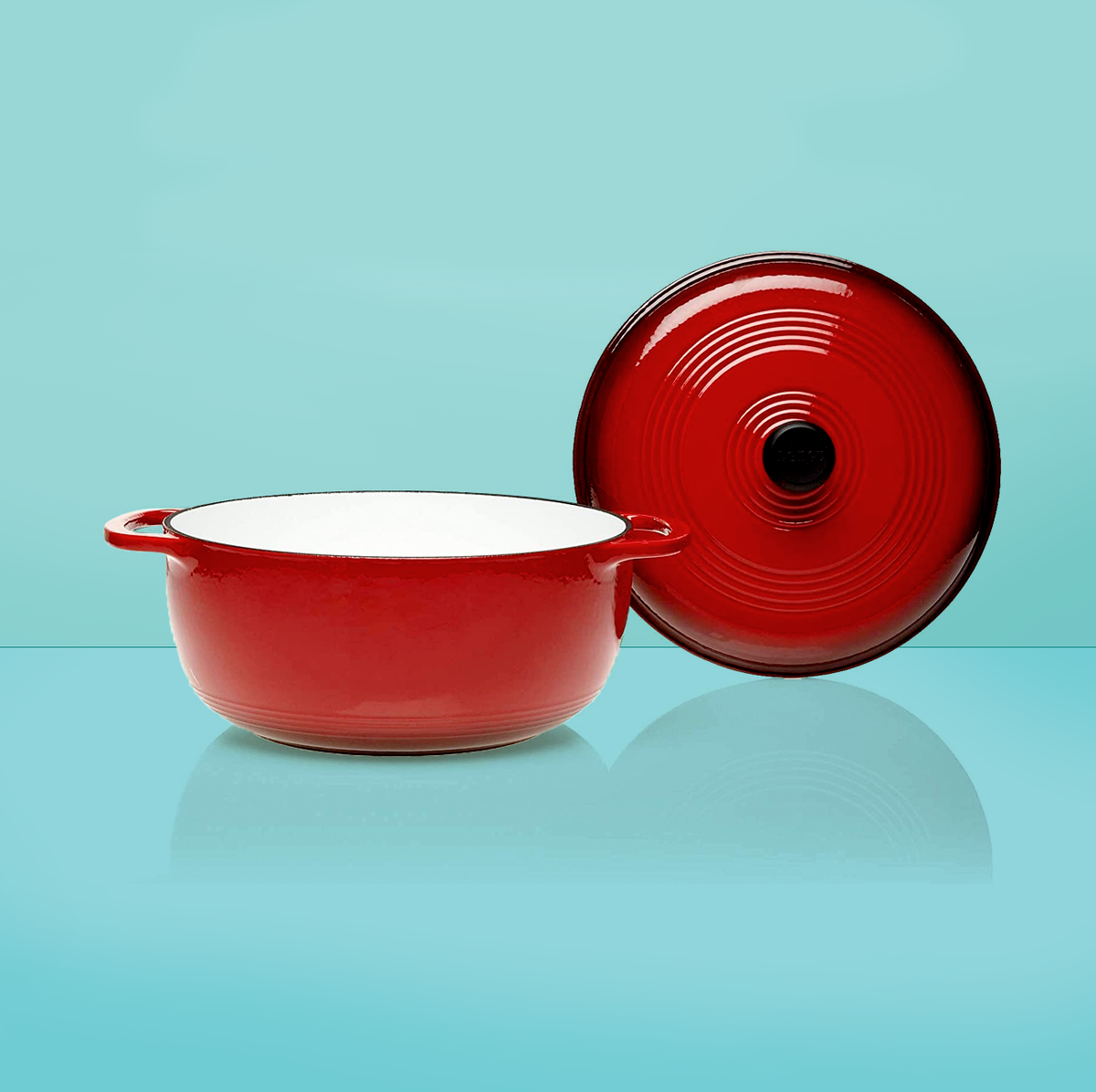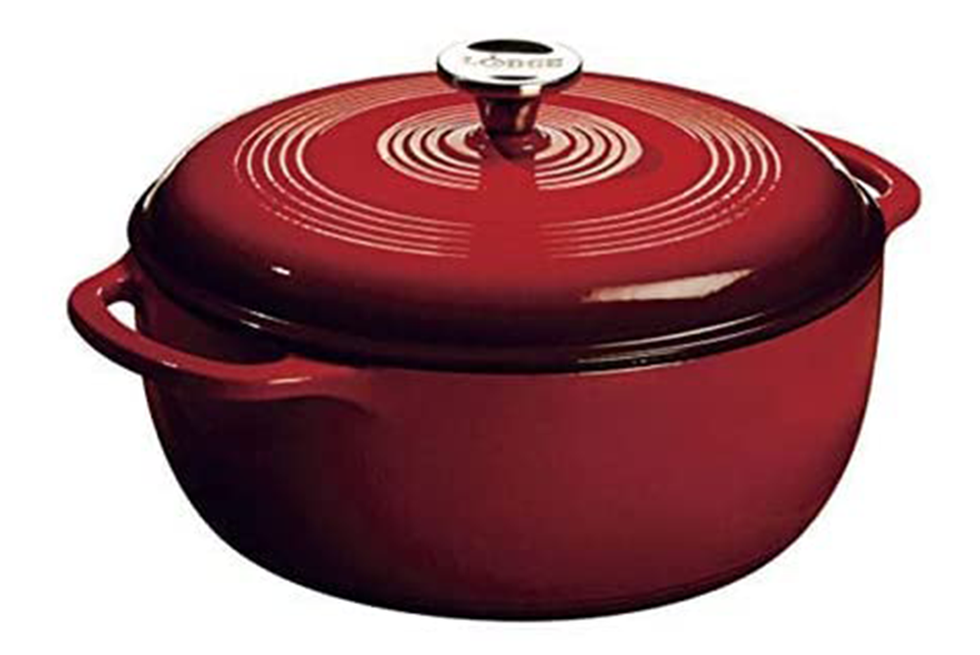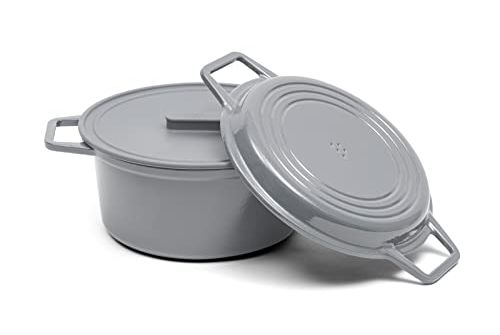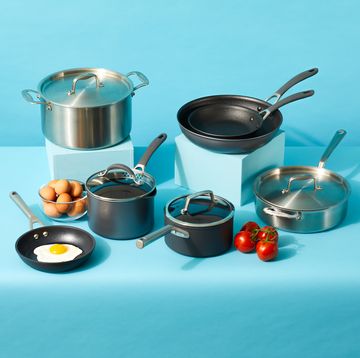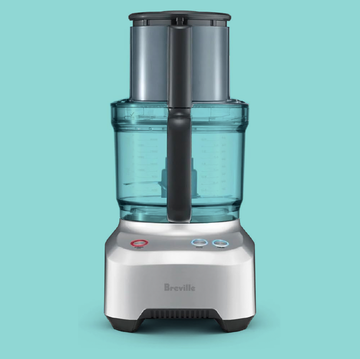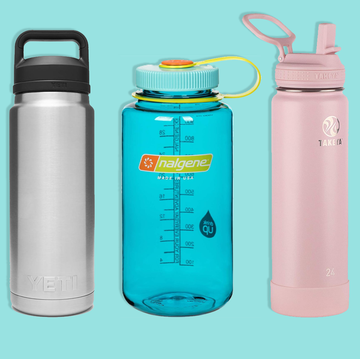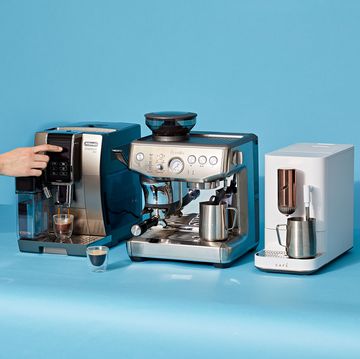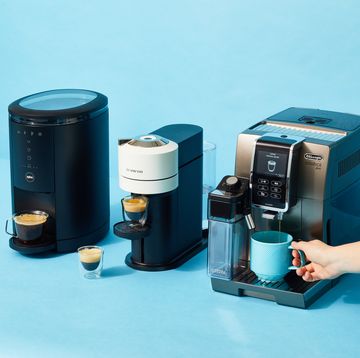We updated this article in November 2022 to ensure that all products reflected current pricing. We also pared down the list to our top five picks, including two new recommendations from Emile Henry and Misen.
A Dutch oven is a does-it-all addition to your collection of great cookware. It's useful for so many cozy recipes — cozy soups, beef stews and one-pot pastas, to name a few Dutch oven recipes — as well as deep-fried chicken and even homemade bread. A quality Dutch oven heats evenly, retains heat well and is easy to clean. Because it's made of enameled cast iron, it can easily go from stovetop to oven, and the durable material means it can be passed down from generation to generation.
In the Good Housekeeping Institute Kitchen Appliances and Innovation Lab, our experts test all kinds of pots and pans, including nonstick pans, baking pans, cast iron pans and pizza stones — even electric Dutch ovens that function like slow cookers. When testing Dutch ovens, we keep the home cook in mind: We make beef stew to assess browning and simmering because these are common uses a Dutch oven should excel at. We evaluate the cookware's heat distribution to ensure that the pots deliver even, consistent cooking. We check whether the lid fits well and note whether the pot is easy to clean. We also factor in the weight of each pot: These are naturally heavy pieces of cookware, and ease of use is important to the experience of cooking.
Our top picks:
Keep reading after our picks for more on how we test Dutch ovens. We also offer advice on what to look for when shopping for a Dutch oven.
The Le Creuset Dutch oven delivers when it comes to performance and durability. In our tests, it cooked a good beef stew with even browning throughout, and the handle stayed cool enough to handle without a pot holder. At just under 13 pounds, it’s a manageable weight for maneuvering, and its lid has a large knob that makes it easy to handle. Its lifetime warranty means it's a worthwhile investment. And we love that it comes in a wide array of colors, including a rich chocolate brown called Ganache, the brand's latest offering.
This much more affordable Lodge enameled cast iron Dutch oven performs just as well as some of its pricier counterparts. In our tests, it browned food nicely and simmered food evenly. One trade-off is that it has a slightly smaller surface area at the bottom of the pot, so it might be necessary to work in smaller batches compared with other Dutch ovens of a comparable volume. We also noted that it doesn’t withstand long-term wear and tear like a higher-priced model, partially due to its exposed cast iron rim that can rust if not dried immediately after washing.
This pick was one of the winners of our 2022 Kitchen Gear Awards. It impressed our Kitchen Appliance Lab pros thanks to its innovative material, which is a new ceramic that makes the pot notably lighter than standard cast iron Dutch ovens. The 6-quart version comes in at just 7.5 pounds. The reduced weight was appreciated when storing the pot as well as when maneuvering during use — and it made cleanup a breeze. The Emile Henry Dutch oven also produced stew that had great flavor with meat that was tender while holding its shape.
Our tester liked that this Staub Dutch oven has a large surface area, which helps you get through bigger batches of browning more quickly. Unlike many other Dutch ovens, this pot has a dark interior, which helps to hide stains and imperfections and to help the colors in food pop when serving. In our test, this pick made a good beef stew that retained liquid well, but it did not brown as well as some other models. The lid was on the heavier side, which made washing and handling a little tricky.
Our kitchen experts love that this pan — a winner of our 2021 Kitchen Gear Awards — comes with two lids: a traditional lid with a handle as well as a lid that doubles as a grill pan. When we used the Dutch oven in our standard tests, the beef stew turned out tender and flavorful. We additionally tested the grill pan lid, and our steak got nice char marks. The double-duty design makes this pick a great choice for small kitchens. The one downside is that because the grill pan lid can also be used directly on the burner, it is prone to more staining, but a powdered cleaner like Bar Keepers Friend can restore it to a like-new shine.
How we test Dutch ovens
In the Good Housekeeping Institute Kitchen Appliances and Innovation Lab, we've tested more than 25 Dutch ovens over the years to understand how each heats, cooks and cleans. We did this by cooking a lot of beef stew using more than 60 pounds of beef stew meat, 8 pounds of onions, 7 pounds of carrots, 14 quarts of chicken broth and 12 bottles of red wine. Making stew provides the opportunity to evaluate a Dutch oven's ability to brown meat, simmer steadily and turn out flavorful beef stew with tender meat and a rich sauce.
We also assess the cookware's heat distribution and responsiveness by coating it with shortening and a thin layer of flour and then heating the pot until the flour browns; the level of browning is then evaluated against a standardized chart. The pattern of the browning helps us determine hot spots in the pan and indicates how evenly it distributes heat. We also weigh each Dutch oven and check whether the lid fits well and the handle stays cool enough to touch. We note whether it's easy to clean and if it stains or chips with use. In addition, our kitchen experts often test Dutch ovens by using them at home in their daily cooking and have been using their personal enameled cast iron Dutch ovens for years.
What to look for when shopping for a Dutch oven
✔️ Material: Most Dutch ovens are made of cast iron or enameled cast iron, but they are also available in nonstick, ceramic and stainless steel versions.
- Cast iron is a great material for cooking because it heats evenly and retains heat well. It's oven safe and will last a long time, but it requires the most TLC in the way of care and cleaning.
- Enameled cast iron is the most popular material for Dutch ovens. It's easier to use and care for than non-enameled cast iron because it doesn't require seasoning or special care when cleaning.
- Ceramic, nonstick and stainless steel Dutch ovens are often lighter and less expensive. But they may not retain heat as well as cast iron Dutch ovens.
✔️ Size: The standard for Dutch ovens is about 5 ½ quarts, but they run anywhere from 8 ounces to 13+ quarts. When choosing a size, consider how you'll store the pot: Some cooks keep their Dutch oven on the stove (it will be subjected to a bit more wear and tear here), while others prefer to tuck it away on a shelf or in a cabinet between uses.
- Smaller Dutch ovens (1 to 4 quarts) are good if you’re typically cooking for just yourself and/or one other person. They're also great for sauces and side dishes like rice. They are easy to maneuver, clean and store, but they are generally not suitable for larger dishes or entertaining.
- Larger Dutch ovens (5 to 13 quarts) are great for large families, special occasions and big-batch cooking. Keep in mind, the bigger your Dutch oven is, the heavier it will be.
✔️ Shape: Most Dutch ovens are round, but they’re also available in oval shapes and some festive holiday and seasonal shapes, like a pumpkin shape or a heart shape. When it comes to shape, this is mostly up to personal preference, but here's what to keep in mind:
- A round shape fits more symmetrically on top of a burner. If you are going to be doing a lot of stovetop cooking, then it is advantageous to stick to a round shape so that you don't have to worry about any parts of the pot heating unevenly over the burner. This is why we used round Dutch ovens for our tests.
- An oval shape can better accommodate a whole chicken or a large cut of meat because of the added length that it offers. Sometimes the ends of an oval Dutch oven might not get as hot as the center, which can result in uneven browning. That said, if you have an induction stove, you can position an oval Dutch oven over two synced burners for more even heating.
- A festive holiday shape is great for entertaining, but the fun design can prevent it from being practical from an everyday standpoint.
✔️ Lid: Look for a tight-fitting lid that still allows some steam to escape so that moisture can reduce in soups and stews. Most come with a cast iron lid, but glass options are useful if you like to keep an eye on your food.
✔️ Handles: Shorter lid handles can be useful when transferring the pot to the oven, but they often get hot more quickly on the stovetop. A plastic knob will likely not last as long and might not be oven-safe to the same temperature as a metal knob. Some brands, like our best overall, Le Creuset, sell metal knobs so you can swap out a plastic one if you plan to use your Dutch oven for a lot of baking. Large, comfortable side handles are nice for stabilizing the pot when you're stirring and make the pot easier to maneuver.
Why trust Good Housekeeping?
Senior Editor and Analyst Sarah Wharton contributed to the testing for this story. She has also tested meat thermometers, immersion blenders and carbon steel pans for the Good Housekeeping Institute. She is a trained cook and recipe developer.
Kitchen Appliances Lab Director Nicole Papatoniou oversaw and performed testing for this story. She leads all content for the lab and has tested countless types of cookware including ceramic cookware sets and nonstick cookware sets. She is a graduate of the French Culinary Institute (now Institute of Culinary Education).
Sarah (she/her) is a deputy editor in the Good Housekeeping Institute, where she tests products and covers the best picks across kitchen, tech, health and food. She has been cooking professionally since 2017 and has tested kitchen appliances and gear for Family Circle as well as developed recipes and food content for Simply Recipes, Martha Stewart Omnimedia, Oxo and Food52. She holds a certificate in professional culinary arts from the International Culinary Center (now the Institute of Culinary Education).
Nicole (she/her) is the director of the Good Housekeeping Institute's Kitchen Appliances and Innovation Lab, where she has overseen content and testing related to kitchen and cooking appliances, tools and gear since 2019. She’s an experienced product tester and recipe creator, trained in classic culinary arts and culinary nutrition. She has worked in test kitchens for small kitchen appliance brands and national magazines, including Family Circle and Ladies’ Home Journal.
